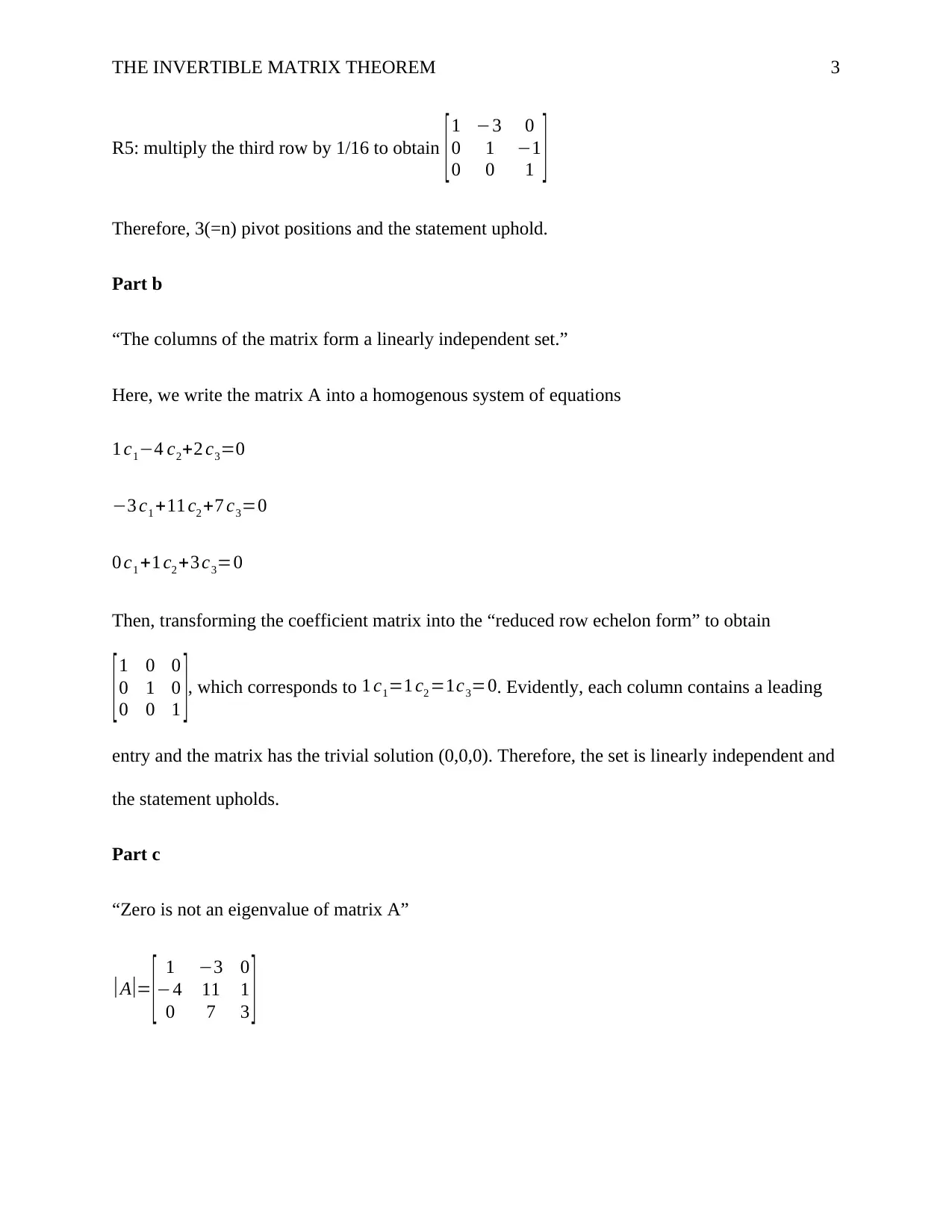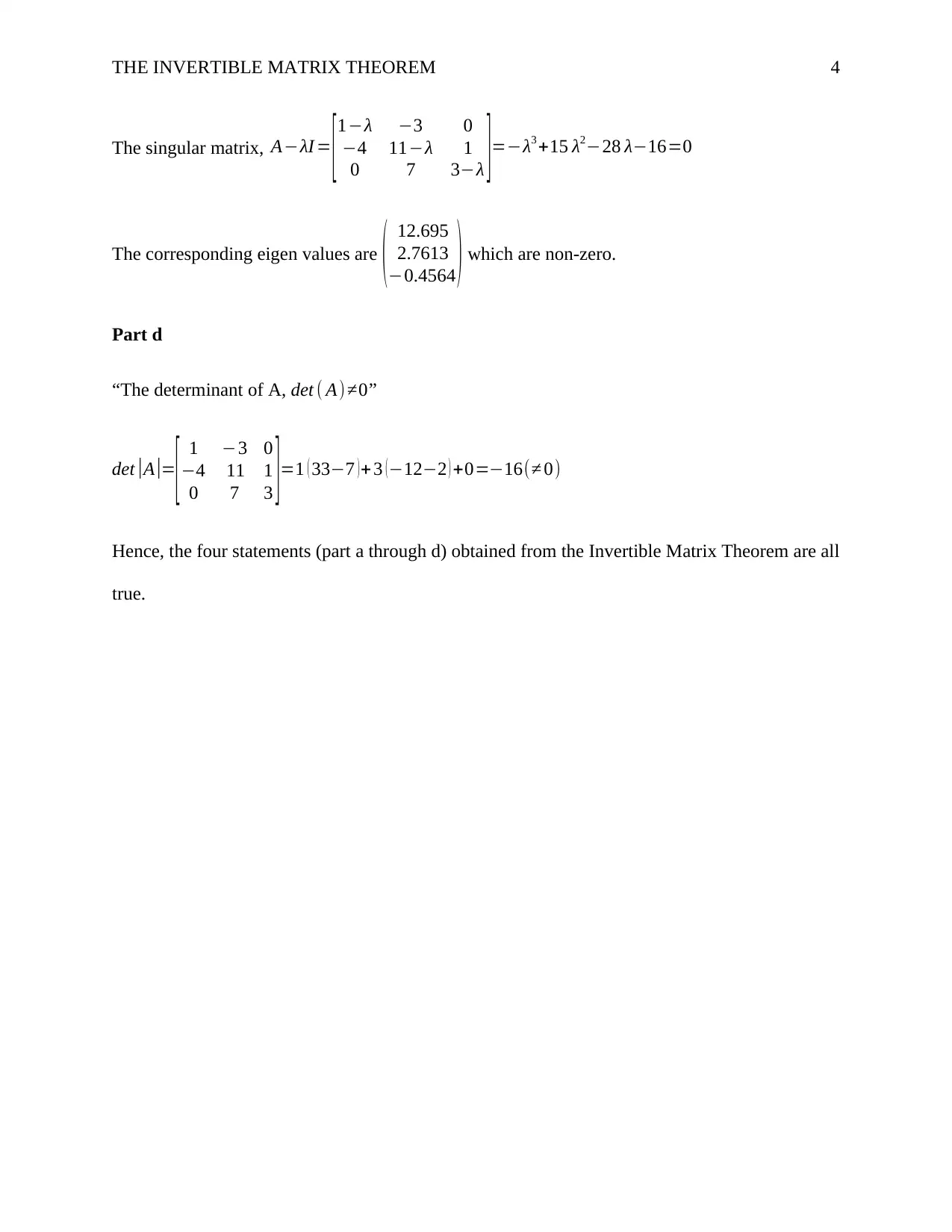Invertible Matrix Theorem: Detailed Analysis and Application Examples
VerifiedAdded on 2020/05/03
|5
|413
|350
Homework Assignment
AI Summary
This assignment provides a detailed analysis of the Invertible Matrix Theorem, covering key aspects such as pivot positions, linear independence of columns, eigenvalues, and determinants. The solution includes step-by-step calculations to verify the theorem's statements using a specific matrix example. The assignment demonstrates how to compute the row echelon form, analyze linear independence, and determine eigenvalues to confirm the theorem's validity. References to relevant research papers are also included, offering a comprehensive understanding of the topic. This resource, available on Desklib, helps students grasp the fundamental concepts of linear algebra and the applications of the Invertible Matrix Theorem.
1 out of 5










![[object Object]](/_next/static/media/star-bottom.7253800d.svg)